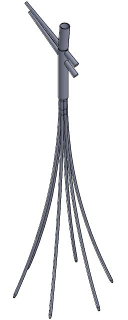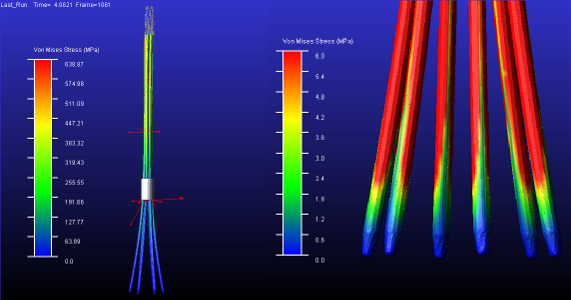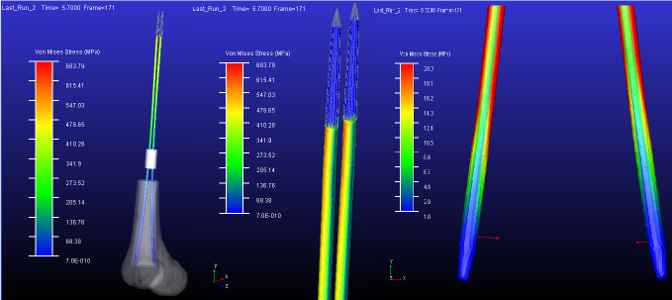Politecnico di Torino
Ateneo: Politecnico di Torino
Corso di Laurea: Laurea Magistrale in Ingegneria Biomedica
Data di discussione: 25/10/2016
Relatori: Prof.ssa Bignardi Cristina, Prof. Audenino Alberto, Ing. Mara Terzini
Tesisti: D’ambrosio Silvia, Iannizzi Giada
The aim of the present study was to investigate structural aspects related to a particular type of self-locking elastic intramedullary nail designed for femur diaphysis fractures. This device for synthesis of bone fractures consists of a cylindrical proximal component containing the proximal ends of six flexible nails preloaded in order to diverge and held together distally by a retaining system; the retaining system is made to slide in the proximal direction once the device, with the nails closed, has been inserted in the bone diaphysis. The final configuration of the device, with the diverging nails, should stabilize the intramedullary nail inside the bone and therefore the fracture. By means of the multibody analysis method it was simulated the surgical maneuvering of the retaining system sliding, that leaves the six flexible nails free to diverge, and the interaction between the device and the femur.
The simulation difficulty consists in the flexible bodies subjected to large deformations modeling and in the management of contacts, respectively, between the different nails that slide over each other and between the individual nails and the bone. Crucial to get a realistic behaviour of the model was the selection of stiffness and damping values assigned to contact conditions.
The geometric model of the device (fig. 1) was made using Solidworks (Dassault Systèmes SolidWorks Corporation, USA); an accurate mesh of the nails and the formulation of the model was made using Patran-Nastran (MSC Software, USA), then the dynamic analysis, that simulates the retaining system sliding up and down along the bundle of nails, was performed by means of Adams (MSC Software, USA) (fig. 2).


Entire CAD model - Fig. 1 Von mises entire model - Fig. 2
At first, the up and down sliding of the retaining system and the consequent closing and opening of nails were simulated, in order to better understand the interaction among the different components of the device itself, then it was analysed its behaviour into the femur (fig. 3).

Von mises - Fig. 3
In detail, the sliding of a cylinder along the six nails was simulated, in order to reproduce the device closing performed at the end of its production; after that, the cylinder was pulled up and nails opening inside the bone, as it happens during surgery, was simulated.
Results obtained showed that the insertion of the device into the bone causes, as was expected, stress peaks at nails-bone interface, high values of contact forces among the nails and their torsion during the device.
The model is used for the evaluation of fractures stabilization in relation with their localization (pertrochanteric, proximal, distal…).